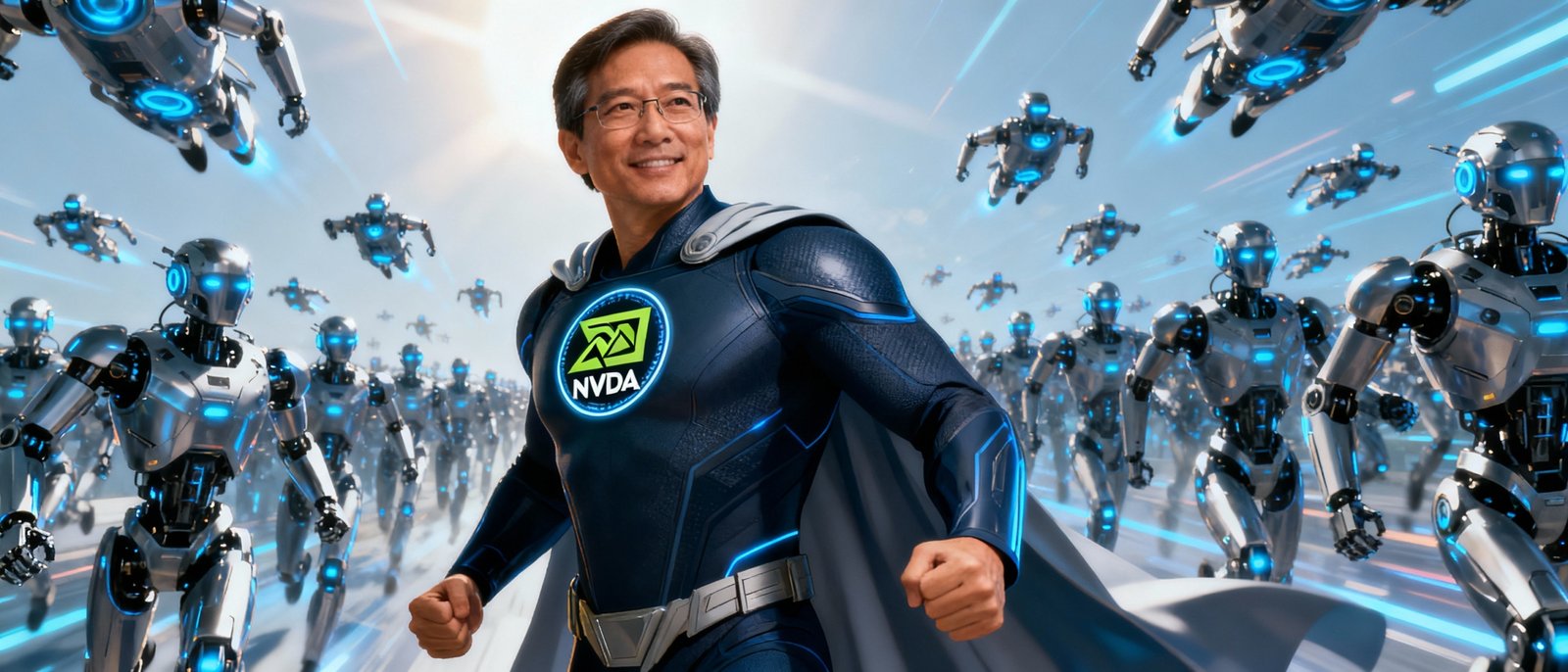
Nvidia (NVDA) CEO Jensen Huang has delivered a masterclass in corporate optimism, dismissing AI bubble fears with the kind of swagger usually reserved for Silicon Valley’s most confident CEOs. In a recent earnings call that sent shares soaring yesterday after the close, Huang argued that the current AI boom is not a speculative frenzy, but a structural transformation—akin to the shift from mainframes to PCs, or the dawn of the internet. While skeptics warn of circular investing and unsustainable spending, Huang insists Nvidia is riding a wave of real, lasting change, not just hype.
The Case Against the AI Bubble
Huang’s rebuttal to bubble talk is both technical and philosophical. He outlined three key transitions fueling demand for Nvidia’s chips: the shift from CPUs to GPUs, the rise of AI-driven applications, and the emergence of “agentic” and “physical” AI systems. The slowdown of Moore’s Law, he noted, has pushed traditional computing to its limits, forcing industries from data processing to ad recommendations to embrace GPU-powered systems. “From our vantage point, we see something very different,” Huang said, brushing off concerns that the AI surge is a bubble. Instead, he sees a tipping point where AI is not just improving existing tools but creating entirely new categories of software and hardware, from coding assistants to robotics. Nvidia’s unified architecture, he argued, is uniquely positioned to power this next wave of infrastructure growth.
Circular Investing: A Self-Fulfilling Prophecy?
The skepticism around the AI boom centers on the circular nature of some of Nvidia’s deals. Cloud providers and tech giants are investing in AI startups, which in turn use those funds to buy Nvidia chips, creating a feedback loop that some fear could end badly. For example, a $100 billion investment in OpenAI was announced in September, with the understanding that OpenAI would purchase Nvidia chips. Similarly, Anthropic recently committed to acquiring $30 billion in computing capacity from Microsoft Azure, powered by Nvidia chips, in exchange for investments from both tech giants. These reciprocal funding agreements have raised eyebrows, with some analysts warning that the cycle could collapse if the companies involved fail to turn a profit. Huang, however, remains unfazed. “Sales of Blackwell are extraordinary, and our cloud GPUs are completely sold out,” he said, reinforcing his view that the current surge in AI spending is not expected to wane soon.
The Humor in the Hype
Huang’s tone during the earnings call was laced with a touch of sophisticated humor. When asked about the circular investing concerns, he quipped, “If you’re worried about the bubble, just look at our order book. It’s not a bubble if the demand is real.” He also joked about the “circularity” of the deals, saying, “We’re not just selling chips; we’re selling the future. And if the future is circular, so be it.” This blend of technical insight and wry humor has become a hallmark of Nvidia’s leadership, helping to reassure investors even as the company’s reliance on a handful of major customers grows. In the third quarter, 61% of Nvidia’s $57 billion in revenue came from just four unnamed customers, up from 56% in the previous quarter. Past announcements suggest these could include Microsoft (MSFT), Meta (META), and Oracle (ORCL).
The Road Ahead: Infrastructure and Beyond
Huang acknowledged that building the required data centers to meet the vision of AI-powered everything will require an enormous amount of land and power. “We’ve now established partnerships with so many players in land and power and (data center buildings), and of course, financing these things,” he said. “None of these things are easy, but they’re all tractable, and they’re all solvable things.” As companies like Google (GOOG) and Amazon (AMZN) design their own AI chips, some analysts question whether Nvidia’s dominance is sustainable. But for now, Huang’s message is clear: the AI boom is not a bubble, but a transformation that will reshape industries for years to come.
The Sum…
Nvidia’s story is a reminder that in the world of tech, the line between visionary and bubble is often drawn in hindsight. For now, Huang is betting that the future is not just bright, but profitable—and he’s inviting investors to join him on the ride.
The Sources
- https://timesofindia.indiatimes.com/technology/tech-news/nvidia-ceo-jensen-huang-talks-about-the-biggest-fear-everyone-has-about-ai-companies-from-our-point-/articleshow/125456686.cms
- https://economictimes.com/news/new-updates/nvidia-ceo-jensen-huang-breaks-silence-on-biggest-fear-surrounding-ai-bubble/articleshow/125458939.cms
- https://www.investing.com/news/stock-market-news/tipping-point-or-bubble-nvidia-ceo-sees-ai-transformation-while-skeptics-count-the-risks-4369237
- https://www.cnn.com/2025/11/19/tech/nvidia-earnings-ai-bubble-fears
- https://www.janushenderson.com/en-gb/investor/article/quick-view-how-did-nvidias-earnings-call-address-ai-bubble-concerns/
- https://www.morningbrew.com/stories/2025/11/20/nvidia-blows-bubble-fears-and-expectations-away
- https://www.reuters.com/world/china/ai-leader-nvidia-forecasts-fourth-quarter-revenue-above-estimates-2025-11-19/
- https://www.nytimes.com/2025/11/20/business/dealbook/nvidia-ai-boom.html
- https://www.youtube.com/watch?v=cAJBA31iu3g
- https://www.bloomberg.com/news/articles/2025-11-20/nvidia-earnings-squash-ai-bubble-fears-big-take-podcast



